- The Importance of Winter Onion Planting
- Benefits of Winter Onion Planting
- Tried-and-Tested Varieties for Winter Onion Planting
- Choosing the Right Varieties
- 1. Allium cepa ‘Winter Hardy’
- 2. Allium cepa ‘Japanese Bunching’
- Benefits of Growing Winter Onions
- Tips for Successful Winter Onion Planting
- Preparing the Soil
- 1. Clear the area
- 2. Loosen the soil
- 3. Amend the soil
- 4. Test the soil pH
- 5. Create raised beds
- 6. Level and smooth the soil
- Soil Amendments for Winter Onion Planting
- 1. Compost
- 2. Well-Aged Manure
- 3. Bone Meal
- 4. Blood Meal
- 5. Epsom Salt
- 6. Vermiculite
- Creating Raised Beds for Winter Onion Planting
- Planting and Caring for Winter Onions
- 1. Selecting the right varieties:
- 2. Timing is crucial:
- 3. Soil preparation:
- 4. Planting:
- 5. Watering:
- 6. Mulching:
- 7. Fertilizing:
- 8. Pest and disease control:
- 9. Harvesting:
- Best Practices for Planting Winter Onions
- Caring for Winter Onions throughout the Season
- 1. Watering
- 2. Mulching
- 3. Fertilizing
- 4. Weed Control
- 5. Pest and Disease Management
- 6. Harvesting
- Harvesting and Storing Winter Onions
- 1. Choosing the Right Time to Harvest
- 2. Harvesting Techniques
- 3. Curing the Onions
- 4. Storing the Onions
- 5. Monitoring and Using the Onions
- Timing the Harvest of Winter Onions
- Size and Color
- Top Growth
- Neck Softening
- Timing
- Harvesting
- Curing and Storage
- “Question-Answer”
- What are the best varieties of winter onions to plant?
- What is the optimal time to plant winter onions?
- How do I plant winter onions?
- How often should I water winter onions?
- When can I harvest winter onions?
- “Video” Large Onions WITHOUT Synthetic Fertilizer: How I Grew Using Organic Methods (+3 side by side tests)
Winter onion planting is a key gardening skill that can lead to successful onion harvests even in colder climates. By choosing the right varieties and utilizing some proven techniques, you can enjoy a bountiful supply of fresh onions all year round.
Two tried-and-tested onion varieties that have shown exceptional performance in winter conditions are Red Winter and Winterkeeper. These varieties are specifically bred to withstand colder temperatures and provide an abundant crop.
Red Winter onions, as the name suggests, produce beautiful red bulbs. They are known for their excellent storage qualities and can be harvested in late spring. The strong, spicy flavor of Red Winter onions adds a delightful kick to any dish.
Winterkeeper onions, on the other hand, are well-suited for long-term storage. This variety produces large, round bulbs that are perfect for storing throughout the winter months. With their mild and sweet flavor, Winterkeeper onions are a versatile addition to any kitchen.
Before planting winter onions, it is important to prepare the soil properly. Incorporate organic matter like compost or well-rotted manure to improve drainage and provide essential nutrients. Onions prefer a pH level between 6.0 and 7.0, so make sure to adjust the soil accordingly.
When planting winter onions, timing is crucial. Aim to plant them after the first frost, but before the ground freezes completely. This usually falls in late autumn. Plant the onion sets or transplants about 1 inch deep and 4-6 inches apart. Mulching the soil with straw or leaves helps to insulate the plants and protect them from extreme temperature fluctuations.
With proper care and attention, Red Winter and Winterkeeper onions can thrive in winter conditions. Regular watering, weeding, and feeding will ensure healthy growth and flavorful harvests. Remember to keep an eye out for pests and diseases, as onions can be susceptible to certain issues. By following these steps, you can enjoy a successful winter onion planting and delicious homegrown onions throughout the year.
The Importance of Winter Onion Planting
Winter onion planting is a crucial step in ensuring a successful onion harvest. By planting onions in the winter, gardeners can take advantage of the plants’ natural cold requirements and ensure that they grow strong and healthy. This process involves planting onion sets or bulbs in the late fall or early winter, allowing them to establish roots before the ground freezes.
Benefits of Winter Onion Planting
Winter onion planting offers several benefits that contribute to the overall success of the crop:
- Cold requirement: Onions are biennial plants that require a period of cold temperature exposure to initiate the bulb formation process. By planting onions in the winter, gardeners can mimic the natural conditions necessary for bulb development.
- Early start: Planting onions in the winter gives them a head start in the growing season. When spring arrives, the onions will already have developed strong root systems, allowing them to begin growing and producing bulbs earlier than onions planted in the spring.
- Extended growing season: Winter-planted onions have a longer growing season compared to spring-planted onions. This extended period allows the onions to grow larger and store more energy in their bulbs, resulting in bigger and more flavorful onions at harvest time.
Tried-and-Tested Varieties for Winter Onion Planting
There are two varieties that have been widely used and proven successful for winter onion planting:
| Variety | Description |
|---|---|
| Candy | A popular choice for winter onion planting, Candy is a long-day variety known for its sweet and mild flavor. It produces large bulbs that store well and is resistant to bolting. |
| Red Baron | Red Baron is a reliable winter onion variety with excellent storage potential. It has a deep red color and a strong, pungent flavor, making it a favorite for culinary use. |
By using these tried-and-tested varieties, gardeners can increase their chances of success and enjoy a bountiful onion harvest.
Overall, winter onion planting is an important step in ensuring a successful onion crop. By taking advantage of the natural cold requirements and using reliable varieties, gardeners can increase their chances of growing healthy, flavorful onions. So, don’t overlook the importance of winter onion planting for a successful gardening season!
Choosing the Right Varieties
When it comes to winter onion planting, choosing the right varieties is key to a successful harvest. There are two tried-and-tested varieties that have proven to be reliable performers in winter conditions:
1. Allium cepa ‘Winter Hardy’
This variety is well-suited for winter planting, as it has been bred to withstand cold temperatures and adverse weather conditions. ‘Winter Hardy’ onions have a strong root system that helps them survive frost and snow, making them a great choice for winter gardens.
2. Allium cepa ‘Japanese Bunching’
This variety is popular among gardeners for its ability to withstand cold temperatures and its high yield. ‘Japanese Bunching’ onions are known for their long green stalks that can be harvested multiple times throughout the winter. They are versatile in the kitchen and can be used in a variety of dishes.
Both of these varieties are known for their hardiness and ability to thrive in winter conditions. When choosing the right variety for your winter onion planting, consider your climate, the length of the winter season, and your personal preferences for taste and use in the kitchen.
It’s also worth noting that these varieties can be grown from either sets or seeds. Sets are small bulbs that are planted directly into the soil, while seeds are sown and grown into seedlings before being transplanted into the garden.
Benefits of Growing Winter Onions
Growing winter onions offers several benefits to gardeners. First and foremost, it extends the growing season, allowing gardeners to enjoy fresh onions during the winter months when other crops may not be available. Winter onions also tend to have a milder flavor than their spring- or summer-grown counterparts, making them a popular choice for those who prefer a subtler onion taste.
Additionally, winter onions are generally easy to care for and require minimal maintenance. They can be grown in containers or in the ground, and they are relatively resistant to common pests and diseases.
Tips for Successful Winter Onion Planting
To ensure a successful harvest of winter onions, here are a few tips to keep in mind:
- Choose a sunny, well-drained location for planting.
- Prepare the soil by loosening it and adding organic matter such as compost or well-rotted manure.
- Plant the onions at the recommended depth and spacing for the variety you are growing.
- Water the onions regularly, but be careful not to overwater, as this can lead to rotting.
- Protect the onions from extreme cold by using row covers or mulching around the plants.
- Monitor for pests and diseases, and take appropriate action if necessary.
- Harvest the onions when the green tops begin to yellow and fall over.
- Allow the harvested onions to cure in a cool, dry location for a few weeks before storing.
By following these tips and choosing the right varieties for your winter onion planting, you’ll be well on your way to a successful harvest of fresh, flavorful onions to enjoy throughout the winter months.
Preparing the Soil
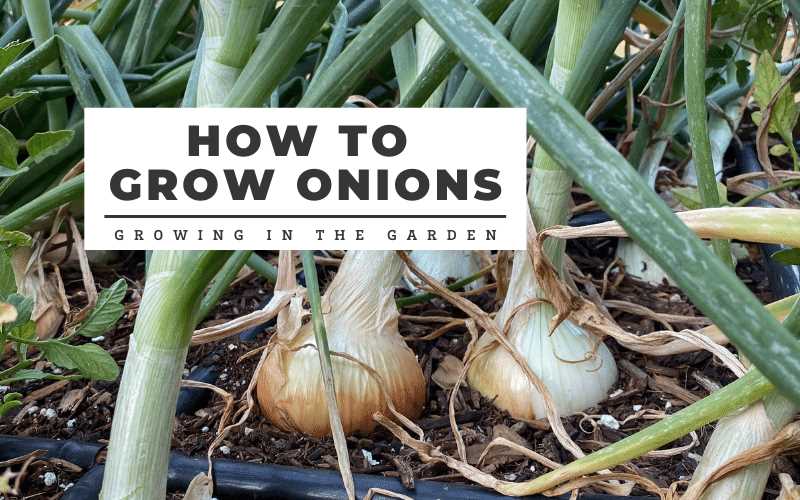
Before planting winter onions, it is important to prepare the soil properly. This will ensure that your onions have the best possible growing conditions and will result in a successful harvest. Here are some steps to follow for preparing the soil:
1. Clear the area
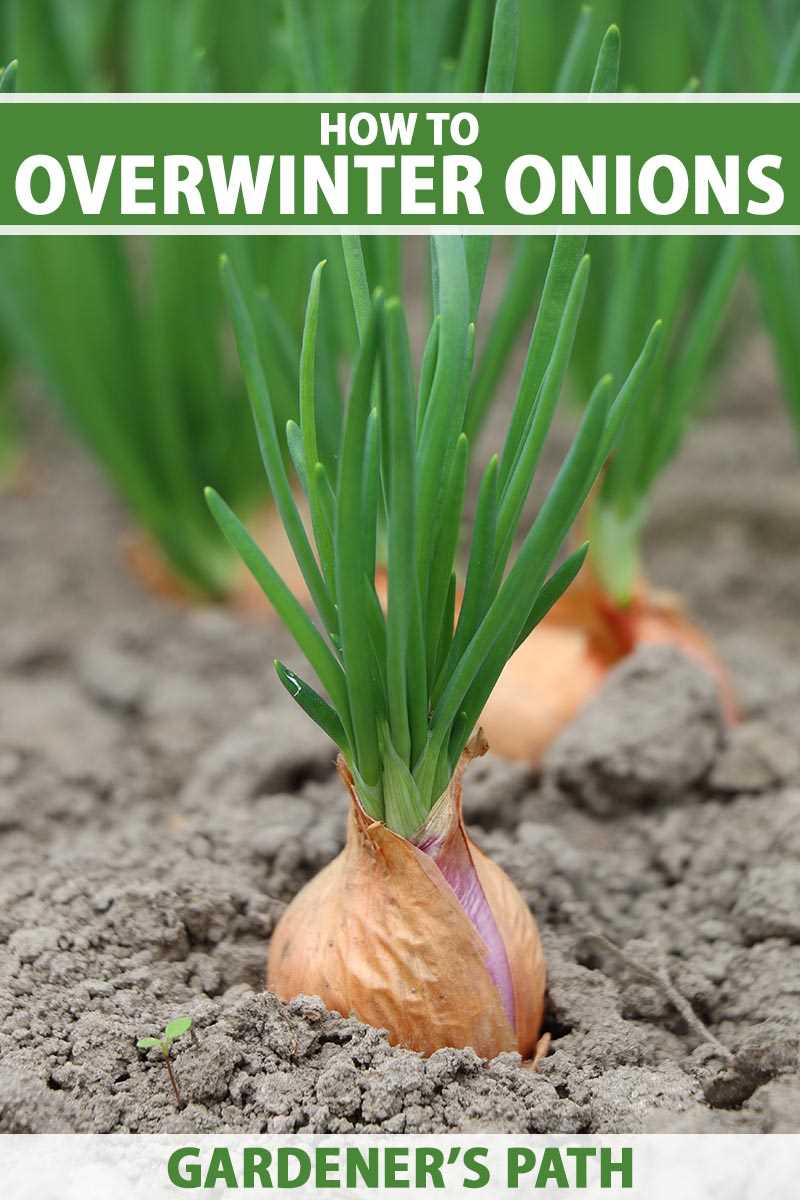
Start by clearing the area where you plan to plant the winter onions. Remove any weeds, rocks, or debris from the soil to create a clean and clear planting bed.
2. Loosen the soil
Use a garden fork or a tiller to loosen the soil. Breaking up compacted soil will help the onion roots penetrate deeper into the ground and will improve drainage.
3. Amend the soil
Winter onions prefer well-draining soil that is rich in organic matter. Add compost or well-rotted manure to the soil to improve its fertility and texture. Work the amendments into the soil using a garden fork or a tiller.
4. Test the soil pH
Winter onions thrive in slightly acidic soil with a pH level between 6.0 and 6.8. Use a soil testing kit to determine the pH of your soil. If the pH is too high or too low, you can adjust it by adding lime or sulfur accordingly.
5. Create raised beds
Creating raised beds for your winter onions can be beneficial, especially if you have heavy clay or poorly draining soil. Raised beds provide better drainage and can help prevent waterlogged roots. Use a shovel to mound the soil into raised beds.
6. Level and smooth the soil
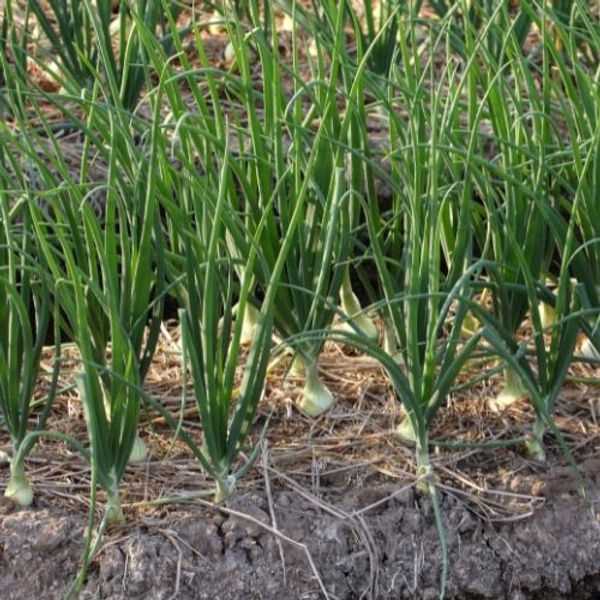
Once you have prepared the soil and created raised beds if desired, use a rake to level and smooth the soil surface. This will make it easier to plant the onions and ensure that they are growing in an even and uniform bed.
Following these steps for preparing the soil will set the stage for successful winter onion planting. Taking the time to properly prepare the soil will pay off in the form of healthy and productive onion plants.
Soil Amendments for Winter Onion Planting
In order to achieve success with winter onion planting, it is crucial to prepare the soil properly. Adding soil amendments can greatly improve the condition of the soil, providing the onions with the necessary nutrients and creating an ideal environment for their growth. Here are some common soil amendments that can be used for winter onion planting:
1. Compost
Compost is a valuable soil amendment that provides organic matter, improves soil structure, and enhances nutrient availability. Adding compost to the soil before planting winter onions can help enrich the soil and promote healthy growth. It can be spread evenly on the planting area and incorporated into the top few inches of soil with a garden fork or tiller.
2. Well-Aged Manure
Well-aged manure is another excellent soil amendment for winter onion planting. It is rich in organic matter and nutrients, and it also helps improve soil structure. It is important to use well-aged manure to avoid burning the onion plants. The manure can be spread on the planting area and mixed into the topsoil prior to planting.
3. Bone Meal
Bone meal is a slow-release organic fertilizer that is high in phosphorus, an essential nutrient for root development and bulb formation. Adding bone meal to the soil can help promote strong root growth and increase the size and quality of the onions. It can be sprinkled evenly on the planting area and mixed into the topsoil before planting.
4. Blood Meal
Blood meal is another organic fertilizer that is high in nitrogen, a nutrient that promotes leaf and stem growth. Incorporating blood meal into the soil can help the winter onion plants establish quickly and develop strong foliage. It can be added to the planting area and mixed into the soil before planting.
5. Epsom Salt
Epsom salt is a source of magnesium, a nutrient that helps in the production of chlorophyll and other essential compounds in plants. Adding Epsom salt to the soil can improve nutrient uptake and enhance the overall health of the winter onion plants. It can be dissolved in water and applied as a foliar spray or mixed into the soil before planting.
6. Vermiculite
Vermiculite is a lightweight mineral that can improve soil aeration and moisture retention. Mixing vermiculite into the soil before planting winter onions can help create a well-drained and moisture-retentive environment, which is beneficial for their growth. It can be evenly distributed and mixed into the top few inches of soil.
By incorporating these soil amendments into the planting area, gardeners can create the optimal conditions for winter onion planting. The amendments provide the necessary nutrients, improve soil structure, and enhance moisture retention, all of which contribute to the success of the winter onion crop.
Creating Raised Beds for Winter Onion Planting
Raised beds are a popular and effective way to plant winter onions. They offer several advantages, including better drainage, increased soil temperature, and improved soil quality. Follow these steps to create raised beds for your winter onion planting:
- Choose a location: Select a sunny spot in your garden that receives at least 6-8 hours of sunlight per day. Avoid areas with poor drainage or low-lying spots where water may accumulate.
- Measure and mark: Decide on the size and shape of your raised bed. Common dimensions are 4×8 feet or 3×6 feet, but you can adjust the size to fit your available space. Use a measuring tape and stakes to mark the corners of the bed.
- Prepare the ground: Clear any weeds or grass from the area inside the marked boundaries. Loosen the soil with a garden fork or tiller to a depth of at least 8-10 inches.
- Construct the frame: Use untreated lumber or bricks to build the sides of the raised bed. The height of the frame should be at least 8-12 inches to allow for proper soil depth. Make sure the corners are square and the frame is level.
- Fill the bed: Fill the raised bed with a mixture of compost, topsoil, and organic matter. Aim for a soil depth of 6-8 inches, which is sufficient for winter onions. Mix the soil components thoroughly to ensure a uniform blend.
- Smooth and level the soil: Use a rake or gardening tool to smooth and level the soil surface. Remove any rocks, debris, or clumps of soil to create a flat and even bed.
- Add organic fertilizer: Before planting the winter onions, apply a balanced organic fertilizer according to the package instructions. This will provide essential nutrients for the onions to thrive throughout the winter.
By creating raised beds for your winter onion planting, you are giving your onions the best possible start. The improved drainage, soil quality, and increased soil temperature will promote healthy growth and higher yields. Remember to water the onions regularly and protect them from harsh winter conditions for a successful onion harvest.
Planting and Caring for Winter Onions
Planting winter onions requires careful attention to detail and a few key steps to ensure a successful harvest. Here are some tips for planting and caring for winter onions:
1. Selecting the right varieties:
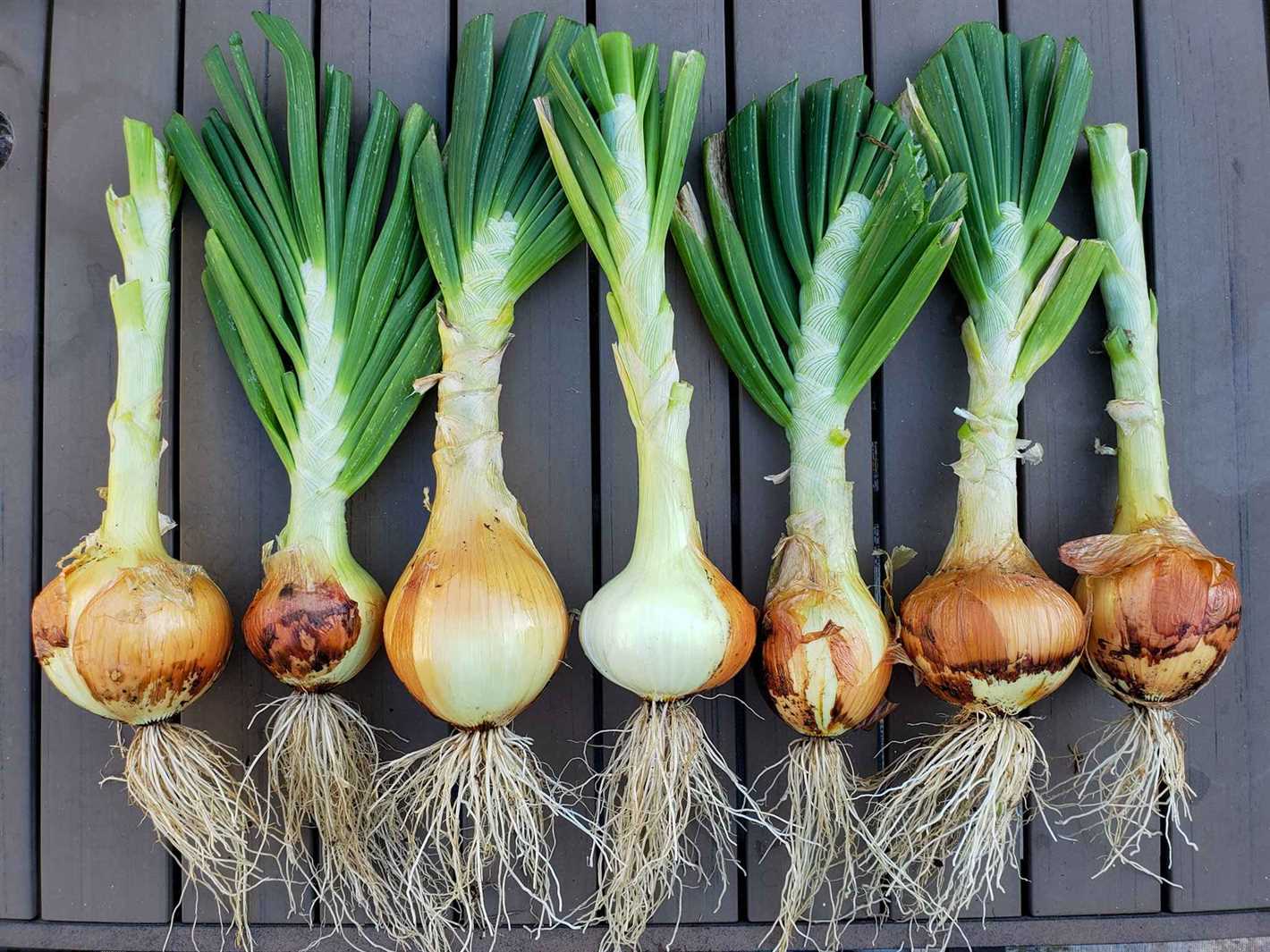
Choose winter onion varieties that are known to perform well in your climate. Look for varieties that have a good track record of surviving cold temperatures and producing a strong crop.
2. Timing is crucial:
Plant winter onions in the late summer or early fall, before the first frost. This will give them enough time to establish their roots and grow before cold weather sets in.
3. Soil preparation:
Prepare the soil by removing any weeds or debris and loosening it with a garden fork or tiller. Winter onions prefer well-draining soil, so consider adding compost or organic matter to improve the soil’s texture.
4. Planting:
Plant winter onions about 1 inch deep and 4-6 inches apart. Space rows 10-12 inches apart to allow for adequate air circulation. Cover the planted onions with soil and gently firm it around the bulbs.
5. Watering:
Water the onions thoroughly after planting to settle the soil and promote root growth. During the winter months, water sparingly as the bulbs are dormant. Monitor soil moisture and water only when the top few inches of soil are dry.
6. Mulching:
Apply a layer of mulch around the onion plants to help conserve moisture, suppress weeds, and protect the bulbs from extreme temperature fluctuations. Use straw, chopped leaves, or compost as mulch.
7. Fertilizing:
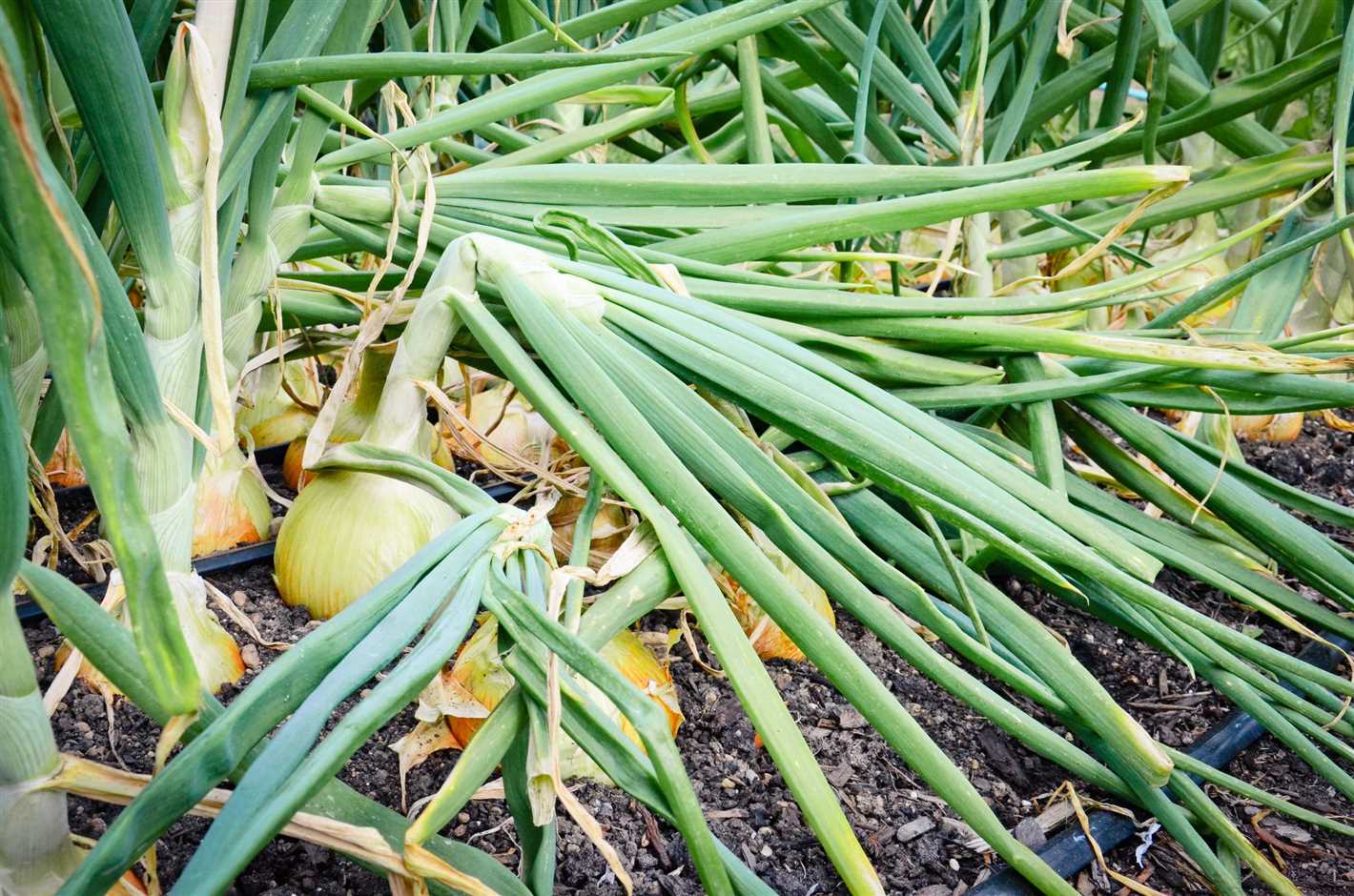
Apply a balanced organic fertilizer or compost in early spring as the onions start to grow. Avoid overfertilizing, as this can lead to lush foliage but smaller bulbs.
8. Pest and disease control:
Monitor your winter onions regularly for signs of pests or diseases, such as onion maggots or downy mildew. Practice good garden hygiene, such as removing any infected plants and rotating crops to prevent the buildup of pests and diseases.
9. Harvesting:
Winter onions are typically ready for harvest in late spring or early summer. Wait until the tops have turned yellow and fallen over before harvesting. Gently lift the bulbs out of the ground with a garden fork and allow them to dry in a well-ventilated area before storing.
By following these guidelines, you can enjoy a bountiful harvest of winter onions and savor their delicious flavor throughout the colder months.
Best Practices for Planting Winter Onions
- Choose the Right Varieties: Select winter onion varieties that are known for their ability to withstand cold temperatures and thrive in winter conditions. Varieties such as “Red Baron” and “White Lisbon” are popular choices.
- Prepare the Soil: Ensure that the soil is well-drained and enriched with organic matter, such as compost or manure. Winter onions prefer a slightly acidic soil pH of around 6.0-6.8.
- Planting Time: It is recommended to plant winter onions in late summer or early fall, allowing enough time for the plants to establish a strong root system before winter sets in.
- Spacing: Space the onion sets or transplants at a distance of about 4-6 inches apart in rows that are around 12-18 inches apart. This will give the plants enough room to grow and ensure proper air circulation.
- Planting Depth: Plant the onion sets or transplants at a depth of about 1-2 inches, with the tip of the bulbs just above the soil surface. This will allow the bulbs to develop and prevent rotting.
- Watering: Keep the soil consistently moist but not waterlogged. Winter onions require regular watering, especially during dry spells, to promote healthy growth.
- Mulching: Apply a layer of organic mulch, such as straw or shredded leaves, around the base of the plants. This will help maintain soil moisture, suppress weeds, and provide insulation to protect the bulbs from extreme temperatures.
- Fertilizing: Apply a balanced fertilizer or compost in early spring to provide the onions with essential nutrients. Follow the recommended application rates on the packaging.
- Weeding: Regularly weed the onion beds to minimize competition for nutrients and ensure optimal growth. Take care not to disturb the shallow root system of the onions.
- Harvesting: Winter onions can be harvested in early spring when the tops start to yellow and fall over. Gently lift the onions from the soil using a garden fork or trowel, being careful not to damage the bulbs.
Caring for Winter Onions throughout the Season
Winter onions require proper care to ensure they grow and develop properly throughout the season. Here are some important tips for caring for winter onions:
1. Watering
During the winter months, it is important to provide adequate watering to your winter onions. However, be careful not to overwater them as excess moisture can lead to rotting. Water the onions when the top layer of soil feels dry to the touch, and avoid watering them during periods of heavy rain.
2. Mulching
Applying a layer of mulch around the base of the winter onions can help retain moisture in the soil and suppress weed growth. Use organic mulch such as straw or compost, and apply it to a thickness of around 2-3 inches. Make sure to leave a small gap around the onion stalks to prevent rotting.
3. Fertilizing
Winter onions benefit from regular fertilization to promote healthy growth. Apply a balanced, slow-release fertilizer in early spring, following the manufacturer’s instructions for application rates. Additional fertilizer applications may be needed during the growing season if necessary.
4. Weed Control
Keep the area around the winter onions free from weeds to ensure they have access to the necessary nutrients and space to grow. Regularly inspect the onion bed and remove any weeds by hand or using a shallow hoe. Be careful not to disturb the onion bulbs or roots while weeding.
5. Pest and Disease Management
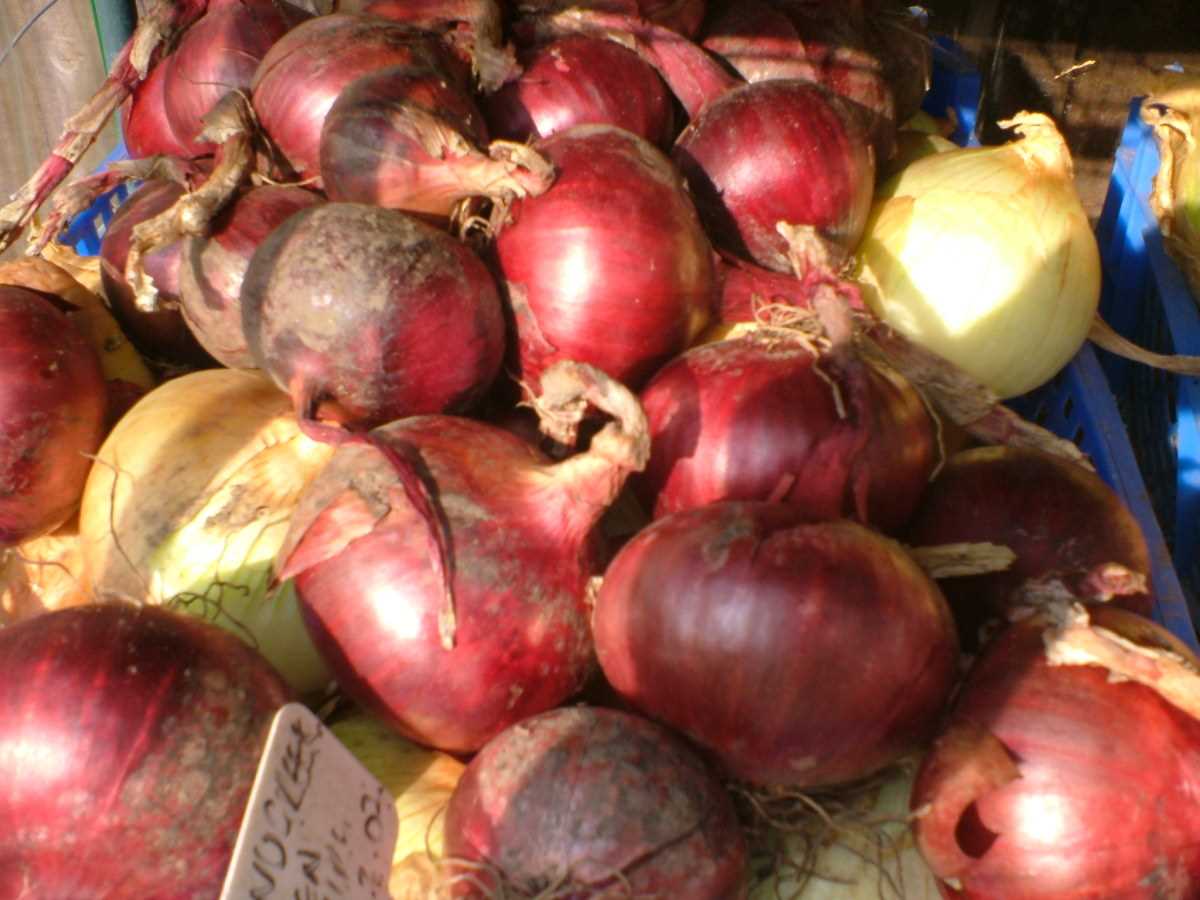
Monitor the winter onions for any signs of pests or diseases, such as aphids, onion maggots, or fungal infections. If pests or diseases are detected, take appropriate measures to control and mitigate the problem, such as using organic pesticides or removing infected plants.
6. Harvesting
As winter onions approach maturity, monitor their growth and check for signs that the bulbs are ready for harvesting. The green tops of the onions will start to turn yellow and fall over when they are ready. Carefully dig up the onions using a garden fork or shovel, being mindful not to damage the bulbs.
By following these care tips throughout the season, you can ensure successful winter onion growth and enjoy a bountiful harvest when the time comes.
Harvesting and Storing Winter Onions
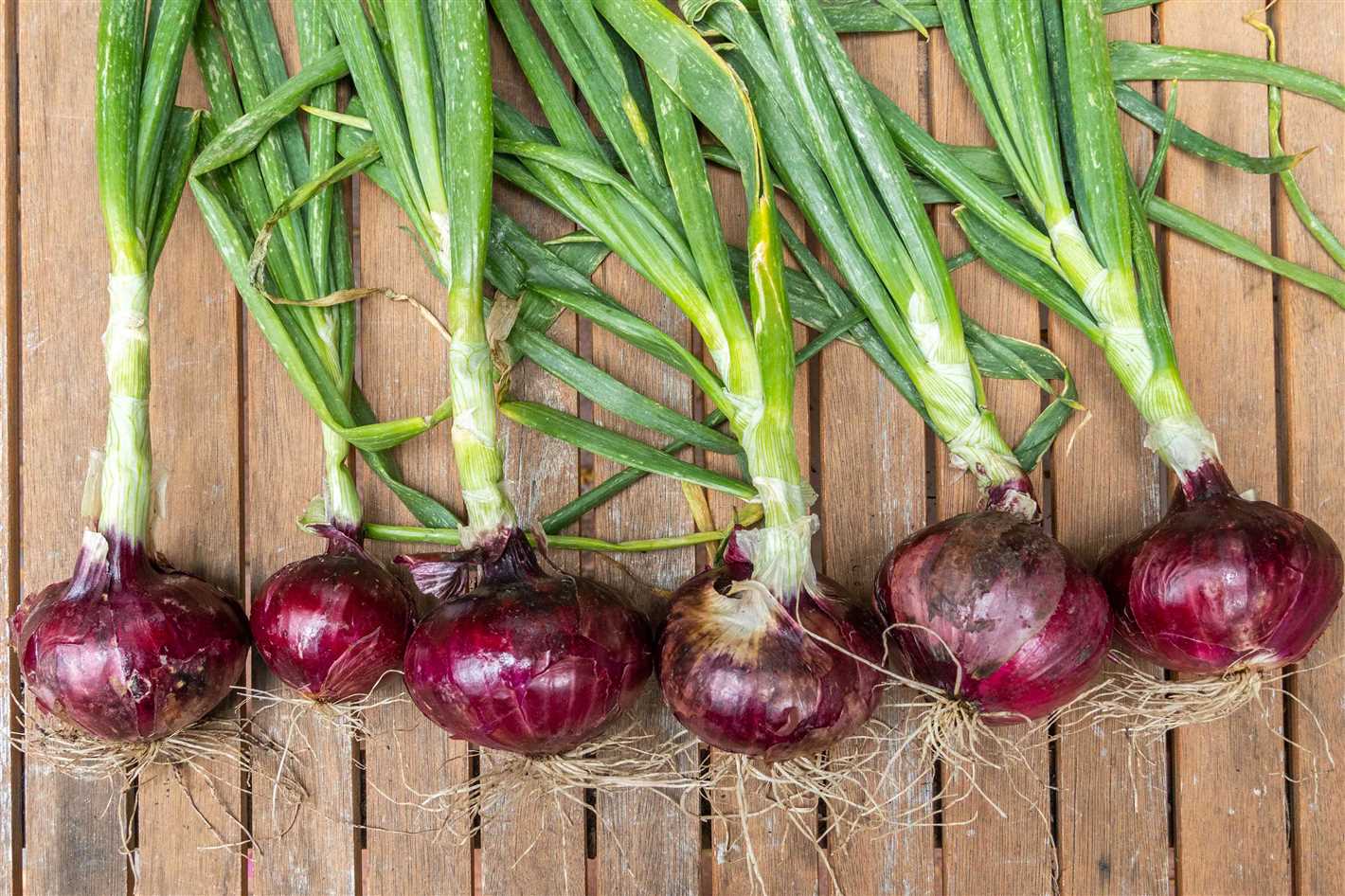
Harvesting winter onions is an exciting moment for any gardener. It’s the culmination of months of hard work and patience. When it comes to harvesting and storing winter onions, there are a few key considerations to keep in mind to ensure the best possible results.
1. Choosing the Right Time to Harvest
The first step in harvesting winter onions is identifying the right time to do so. Winter onions are typically ready for harvest when their foliage starts to turn yellow and fall over. This usually occurs in late summer or early fall. However, it’s important to pay attention to the specific growing time and instructions for your chosen variety as different varieties may have different maturity periods.
2. Harvesting Techniques
When it’s time to harvest winter onions, the best technique is to gently lift them out of the ground using a fork or a garden spade. Carefully insert the tool into the soil a few inches away from the bulb, and then lift the bulbs out of the ground. Be careful not to damage or bruise the bulbs during this process.
3. Curing the Onions
Once the winter onions have been harvested, it’s important to cure them. Curing involves allowing the onions to dry out in a well-ventilated area for several weeks. This helps to toughen the outer skin and extend the shelf life of the onions. Hang the onions in bundles or spread them out on a flat surface, ensuring good air circulation.
4. Storing the Onions
After curing, winter onions can be stored in a cool, dry, and dark place. A temperature of around 32°F to 40°F (0°C to 4°C) with a relative humidity of 65% to 70% is ideal for long-term storage. Storing them in mesh bags, crates, or in a well-ventilated container will help prevent moisture build-up and extend their shelf life.
5. Monitoring and Using the Onions
It’s important to regularly check the stored winter onions for any signs of spoilage or decay. Remove any onions that show signs of rotting or damage to prevent the spread to healthy bulbs. Winter onions can be used in various recipes, adding flavor to soups, stews, salads, and other dishes. Enjoy the harvest and the fruits of your labor!
Timing the Harvest of Winter Onions
Harvesting winter onions at the right time is crucial to ensure the best flavor and storage quality. Here are some tips to help you determine when to harvest your winter onions:
Size and Color
One way to tell if winter onions are ready for harvest is by their size and color. Winter onions should have reached their mature size, typically around the size of a golf ball or larger. The bulbs should be firm and have a rich color, ranging from golden brown to deep red.
Top Growth
Observing the top growth of your winter onions can also give you clues about their readiness for harvest. As the bulbs mature, the foliage will start to turn yellow and begin to die back. Once the majority of the foliage has turned yellow or brown and fallen over naturally, the bulbs are likely ready to be harvested.
Neck Softening
Another indicator of onion maturity is the softening of the neck or stem that connects the bulb and the foliage. When the neck starts to feel soft and easily bends, it signals that the onion has completed its growth and is ready to be harvested.
Timing
The timing for harvesting winter onions will vary depending on the variety and local growing conditions. On average, winter onions are ready to be harvested about 90 to 120 days from planting. However, it’s best to rely on the aforementioned signs of maturity rather than a specific number of days.
Harvesting
Once you’ve determined that your winter onions are ready to be harvested, carefully lift them from the ground using a garden fork or shovel. Avoid damaging the bulbs during this process, as any injuries can lead to spoilage during storage.
Curing and Storage
After harvesting, it’s essential to cure your winter onions before storing them. Cure the onions by placing them in a well-ventilated area with low humidity, such as a shed or garage. Allow the bulbs to dry for about two to three weeks until the necks are completely dry and the outer skin is papery.
Once cured, winter onions can be stored in a cool, dry, and dark place with good airflow. Properly harvested and cured winter onions can last for several months, allowing you to enjoy their delicious flavor throughout the winter season.
“Question-Answer”
What are the best varieties of winter onions to plant?
The best varieties of winter onions to plant are Japanese Bunching onions and Egyptian Walking onions.
What is the optimal time to plant winter onions?
The optimal time to plant winter onions is in late summer or early fall, about 4-6 weeks before the first frost.
How do I plant winter onions?
To plant winter onions, you should prepare the soil by removing any weeds or debris. Then, make small holes or trenches about 1 inch deep and 6 inches apart. Place the onion sets in the holes, cover them with soil, and water thoroughly.
How often should I water winter onions?
Winter onions should be watered regularly, about once a week, especially during dry spells. However, be careful not to overwater, as this can lead to rotting.
When can I harvest winter onions?
You can harvest winter onions in early spring, once the green tops reach a height of about 6-8 inches. Gently dig up the bulbs, being careful not to damage them, and allow them to dry for a few days before storing.







